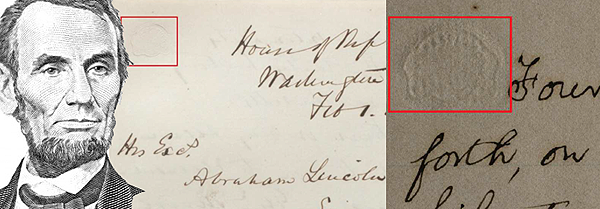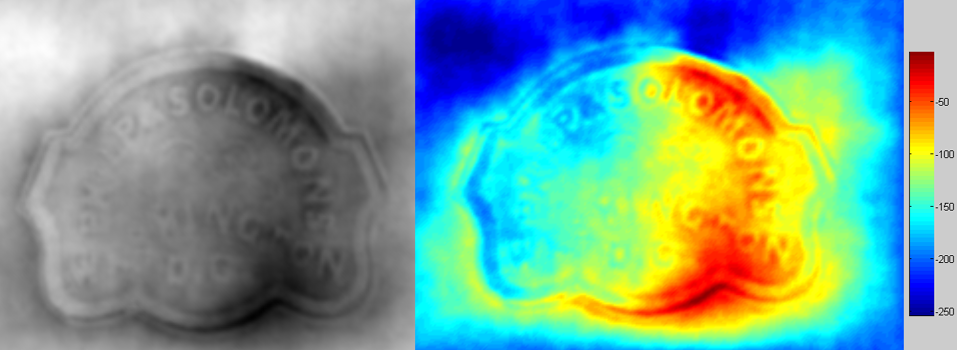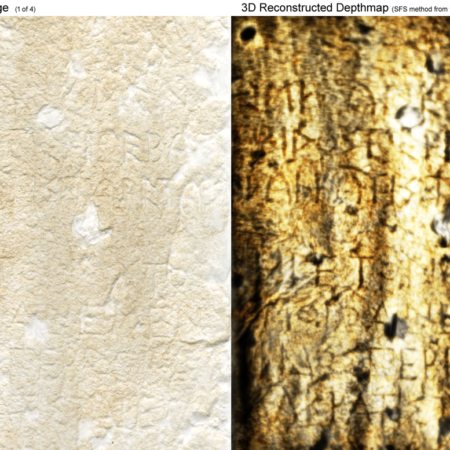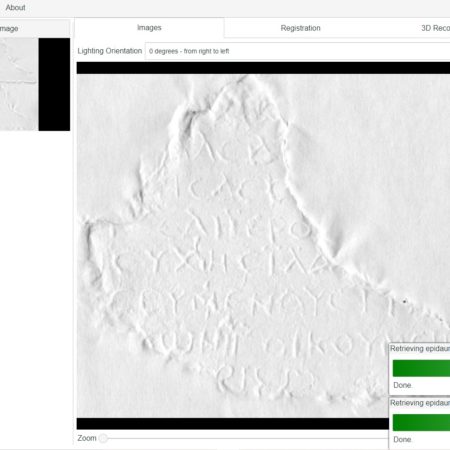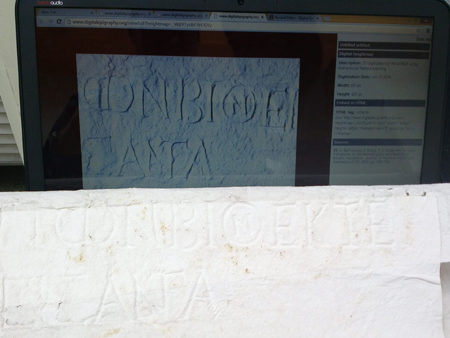Historical documents of Abraham Lincoln digitized in 3D
February 17, 2014.
Conservation experts, digital collection specialists, digital epigraphy scholars and computer scientists from the University of Florida, Cornell University and the Library of Congress have digitized in 3D historical documents of Abraham Lincoln. More specifically, the Cornell University’s copy of Abraham Lincoln’s Gettysburg Address has an embossed anaglyph on the top left of the front page of the document. A similar embossment can also be found on a letter from T. D. Eliot to Abraham Lincoln dated on February 1, 1864, currently located in the manuscript division of the Library of Congress. Paper embossments can be effectively digitized and analyzed in 3D using the same tools that the Digital Epigraphy and Archaeology group has developed for reconstructing ancient Greek and Latin inscriptions.
Description
GAINESVILLE, Fla.
February 17, 2014.
Have you wondered how ancient Greek and Latin inscriptions may relate to Abraham Lincoln?
Conservation experts, digital collection specialists, digital epigraphy scholars and computer scientists from the University of Florida, Cornell University and the Library of Congress have digitized in 3D historical documents of Abraham Lincoln. More specifically, the Cornell University’s copy of Abraham Lincoln’s Gettysburg Address has an embossed anaglyph on the top left of the front page of the document1.
A similar embossment can also be found on a letter from T. D. Eliot to Abraham Lincoln dated on February 1, 1864, currently located in the manuscript division of the Library of Congress.

Embossments of Philp & Solomons, Washington D.C. stationary on a letter from T. D. Eliot to Abraham Lincoln (left) and the Conrell University’s copy of the Gettysburg Address (right).
Paper embossments can be effectively digitized and analyzed in 3D using the same tools that the Digital Epigraphy and Archaeology group has developed for reconstructing ancient Greek and Latin inscriptions3. “A paper embossment is no different than an epigraphic squeeze or ektypon, which is a paper cast of an inscription” according to Dr. Bozia, Associate Director of the Digital Epigraphy and Archaeology project.

Examples of two different 2D visualizations (heightmap and color heatmap) of the 3D reconstructed embossment of PHILPS & SOLOMONS using the Digital Epigraphy Toolbox4.
Below you can find an example of an embedded 3D artifact from the digitized collection. Use touch gestures or mouse movements to interact with the exhibit. You can rotate, zoom, relight and view in full screen information about this embossment.
This important historical evidence can now be easily accessed and studied by scholars using this on-line viewer. One of the advantages of the Digital Epigraphy Toolbox viewer is that it can be easily embedded into websites or other databases by using the following HTML tag:
The above HTML tag corresponds to the PHILPS & SOLOMONS embossment from the letter of T. D. Eliot to Abraham Lincoln, Library of Congress. You can find the corresponding embed-tag of other exhibits within the information provided in their records in the Digital Epigraphy Toolbox4.
The DEA editorial team
References:
1. M. Hamill, Paper Matters: Preserving Cornell’s Gettysburg Address, blogs.cornell.edu/rememberinggettysburg.
2. Solomons Adolphus Simeon, www.jewishencyclopedia.com.
3. A. Barmpoutis, E. Bozia, R. S. Wagman, “A novel framework for 3D reconstruction and analysis of ancient inscriptions”, Journal of Machine Vision and Applications
2010, Vol. 21(6), pp. 989-998. PDF
4. Digital Epigraphy Toolbox, www.digitalepigraphy.org/toolbox.
Funded in part by the NEH grant HD-51214-11.
